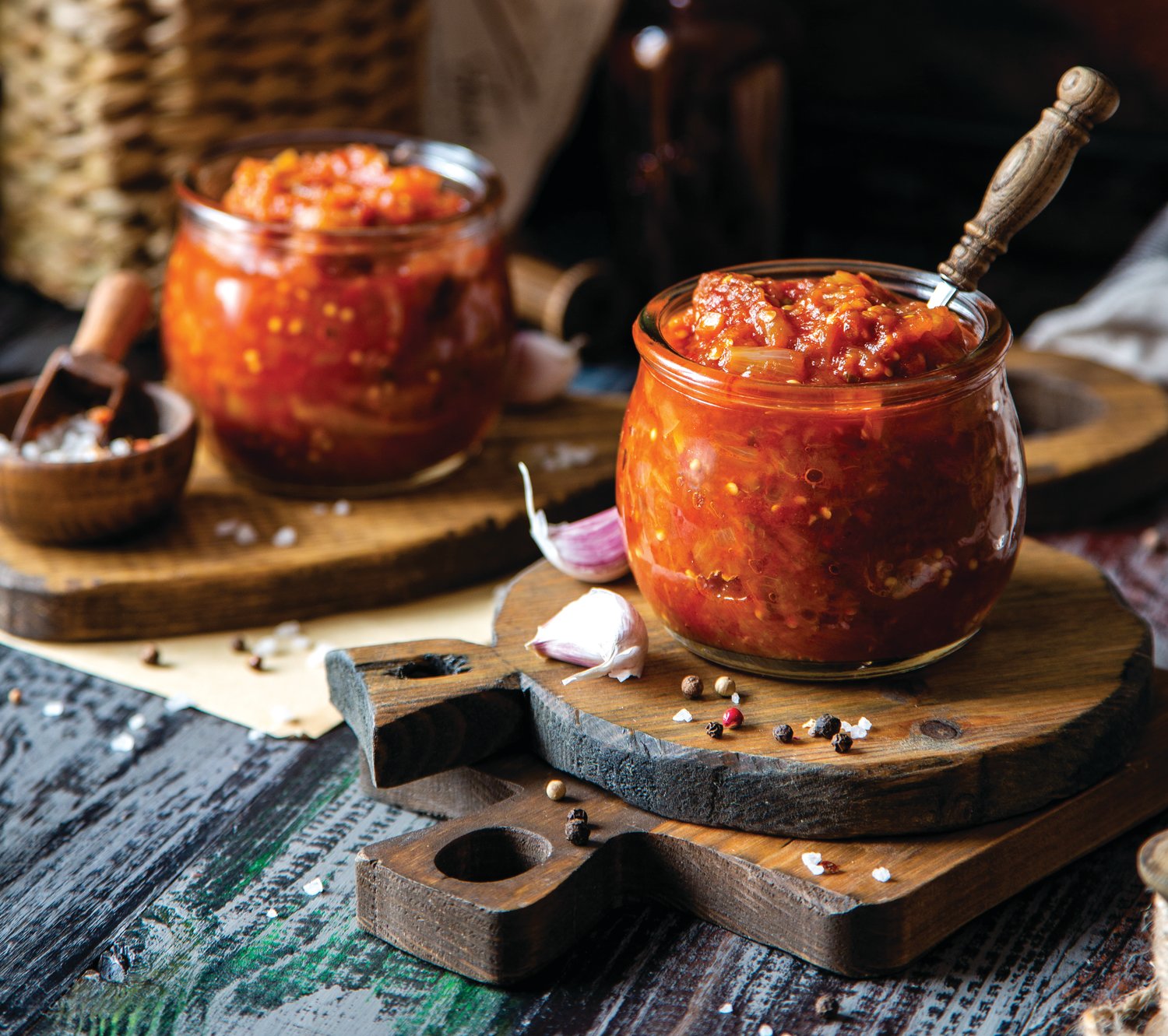What’s a vegetable caviar?
It’s a dish made from finely chopped vegetables. A chunky, flavorful, roasted vegetable spread, that’s perfect for toast or with chips, on meats …
This item is available in full to subscribers.
We have recently launched a new and improved website. To continue reading, you will need to either log into your subscriber account, or purchase a new subscription.
If you had an active account on our previous website, then you have an account here. Simply reset your password to regain access to your account.
If you did not have an account on our previous website, but are a current print subscriber, click here to set up your website account.
Otherwise, click here to view your options for subscribing.
* Having trouble? Call our circulation department at 360-385-2900, or email our support.
Please log in to continue |
|

What’s a vegetable caviar?
It’s a dish made from finely chopped vegetables. A chunky, flavorful, roasted vegetable spread, that’s perfect for toast or with chips, on meats and fish, with eggs. It’s a fabulous and easy way to prepare summer vegetables, and to have on hand throughout the week.
We think of caviar as a fish roe, but the Russian root for caviar or ikra, as they say, means “to cut,” so it’s a way of preparing a dish. Still, I can’t get away from the jewel-like quality and pop of fish caviar when I imagine vegetable caviar, so I think we should chop them into small colorful pieces.
The Eastern European recipes I’ve come across for vegetable caviars boil the vegetables, and semi-mash them into a chunky puree. Perhaps this is because they came into fashion during the Soviet era, which were not culinary enlightened times.
One. Instead of boiling, I roast the vegetables, with seasoning and oil, to caramelize, heighten flavor, and stress their natural sweetness.
My favorite technique for roasting vegetables is to line a rimmed baking sheet with parchment paper, and roast at 425F for 30 minutes, stir and sometimes go another 15 minutes. With vegetable caviars, I’d go with less time so that they’ll hold their shape and not fall apart.
Two. Pulse the roasted vegetables in a food processor, nine to 10 times or just enough to bring them together without losing too much shape. I don’t want a puree, but a chunky spread.
Three. Include an acid like an apple cider vinegar, balsamic, or lemon juice. Add more sea salt if needed, seasonings, fresh herbs, and sometimes a complimentary dairy like sour cream or cream cheese. It all depends on the vegetables.
What kind of salt you use always matters, but especially when we serve food at room temperature or cold.
Cold foods need more acid, sweet, and salt than hot foods, so we can taste them. The function of acid and salt in food is not for us to taste salty or sour, so much as to allow our taste buds to “hear” the food. It opens up the flavors. A good quality sea salt will help. It will have a sweet note and is not acrid or bitter. I like “Real Salt” or “Maldon” sea salt flakes.
Veggie caviar players include carrots, beets, parsnips, celery root, summer squash, peppers, eggplant, tomatoes, onion, garlic, leeks, mushrooms, corn, cauliflower, dill, mint, parsley, and cilantro.
Beet Caviar — roast beets and onions cut into a small dice, then pulse in a food processor, and add salt, dill, lemon, sour cream, and horseradish sauce.
Mushroom Caviar — Roast chopped crimini mushrooms with oil, onions, thyme, and garlic. Pulse, and add black pepper, salt, lemon, parsley, and cream cheese.
Eggplant Caviar — Cut eggplant, red peppers, and onions into jewel-sized pieces and roast. Add minced garlic and roast with olive oil and salt. Pulse, and add parsley, vinegar, a touch of sugar, and maybe some toasted walnuts.
Red Pepper Caviar — Roast onion, red sweet peppers, and one warmer pepper like an anaheim, with olive oil and salt. Pulse in a food processor and add parsley, tomato paste, and vinegar.
Zucchini Caviar
Makes 2½ cups
1 large onion, chopped into a medium dice
1 medium zucchini, chopped into a medium dice
2 medium carrots, chopped into a medium dice
4 cloves garlic, minced
¼ teaspoon whole black peppercorns
1 teaspoon sea salt
1 teaspoon whole fennel seed
¼ cup extra virgin olive oil
¼ cup currants
½ cup green olives, pitted
2 tablespoons raw apple cider vinegar
Preheat the oven to 425F. Line a rimmed baking sheet with parchment paper. Prep veggies, making sure they’re even in size. Grind the salt, pepper, and fennel seed together in a spice grinder.
Massage the oil with the spice mix into the veggies. Roast for 30 minutes. Stir and taste. The onions and zucchini should be melty and sweet, while the carrots are tender, but with a bite. Roast longer, by 10 minutes, if needed.
Add the roasted veggies to a food processor, with the olives, currant, and vinegar. Pulse eight to 10 times to bring everything together into a chunky spread. It will change in flavor as it sits, so taste and correct as needed.
Serve on toasts, with chips, on fish or meats, with other raw veggies, with egg. It’s just yummy on everything.
(Sidonie Maroon is culinary educator at The Food Co-op; abluedotkitchen.com. Follow Sidonie on The Food Co-op’s Facebook group, Cooking with the Co-op.)